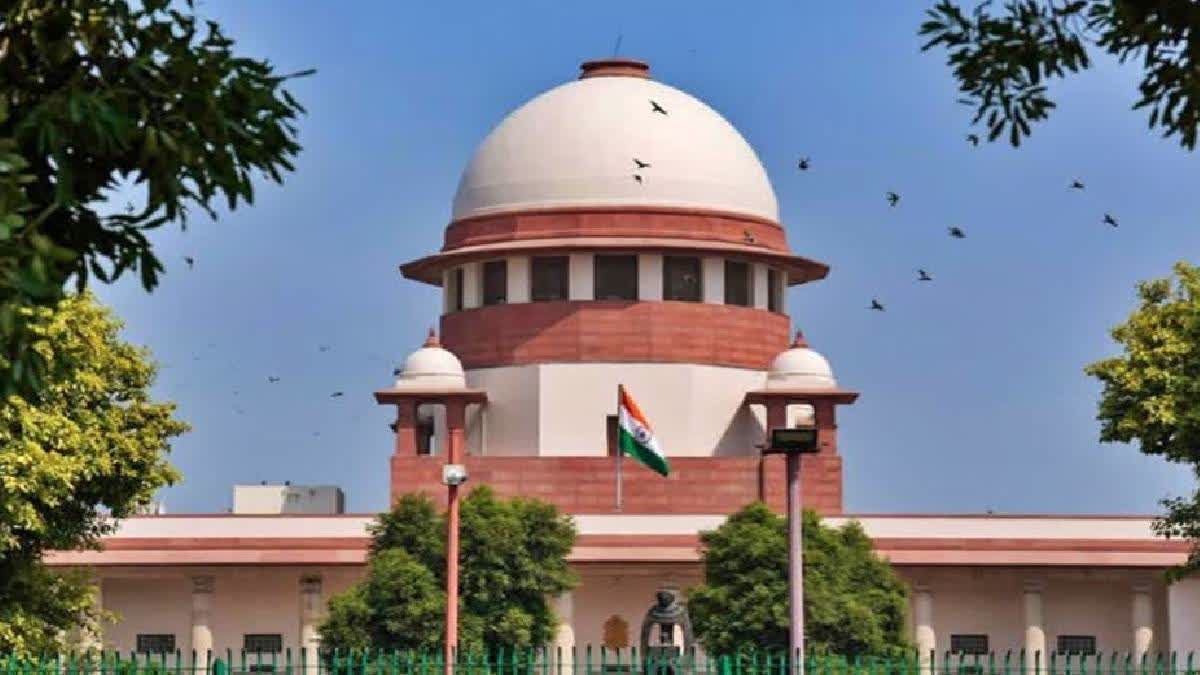New Delhi: Supreme Court judge Justice B V Nagarathna on Tuesday did not concur with observations of the Chief Justice of India D Y Chandrachud on Justice Krishna Iyer’s view, advocating for greater state control over private resources, saying “can we castigate former judges and allege them with ‘disservice’ only for reaching a particular interpretive outcome?”
The majority judgment was authored by CJI on behalf of himself and justices J B Pardiwala, Manoj Misra, Rajesh Bindal, Satish Chandra Sharma, and A G Masih. The majority, in a 7:2 ruling, held that all privately owned property does not qualify as community resources to be taken over by the state for the common good.
One of the two issues framed was: "Whether the interpretation of Article 39(b) adopted by Justice Krishna Iyer in Ranganatha Reddy and followed in Sanjeev Coke must be reconsidered. Whether the phrase ‘material resources of the community’ in Article 39(b) can be interpreted to include resources that are owned privately and not by the State?”
The majority considered the metamorphosis of the Indian economy from the early challenges to the transition towards liberalisation and market-based reforms and from the dominance of public investment to the co-existence of public and private investment. The CJI said: “the doctrinal error in the Krishna Iyer approach was, postulating a rigid economic theory, which advocates for greater state control over private resources, as the exclusive basis for constitutional governance. … a single economic theory, which views the acquisition of private property by the state as the ultimate goal, would undermine the very fabric and principles of our constitutional framework.”
Justice Nagarathna, in a separate 139-page opinion, said the above comments on Krishna Iyer, J. are in my opinion unwarranted and unjustified. She said it is a matter of concern as to how the judicial brethren of posterity view the judgments of the brethren of the past, possibly by losing sight of the times in which the latter discharged their duties and the socio-economic policies that were pursued by the state and formed part of the constitutional culture during those times. “Merely because of the paradigm shift in the economic policies of the State to globalisation and liberalisation and privatisation, compendiously called the ‘Reforms of 1991’, which continue to do so till date, cannot result in branding the judges of this court of the yesteryears ‘as doing a disservice to the Constitution’”, said Justice Nagarathna.
She said, "At the outset, I may say that such observations emanating from this court in subsequent times creates a concavity in the manner of voicing opinions on judgments of the past and their authors by holding them doing a disservice to the Constitution of India and thereby implying that they may not have been true to their oath of office as a judge of the Supreme Court."
"In my view, neither the judgments of the previous decades nor the judges who decided those cases can be said to have done a “disservice to the Constitution”," she added.
She said the answer lies in the obligation that this court, in particular, and the Indian judiciary, in general, has in meeting the newer challenges of the times by choosing only that part of the past wisdom which is apposite for the present without decrying the past judges. “I say so, lest the judges of posterity ought not to follow the same practice. I say that the institution of the Supreme Court of India is greater than individual judges, who are only a part of it at different stages of history of this great Country! Therefore, I do not concur with the observations of the learned Chief Justice in the proposed judgment”, said Justice Nagarathna.
She observed: "Can principles of liberalisation, privatisation, and globalisation adopted in India since the year 1991, reforms in the economy and structural changes that have been brought about in these last three decades hold a mirror against the socioeconomic policies that were followed in the decades immediately after India attained independence? As a result, can the judgments of this Court which interpreted the Constitution to be compatible with the policies of the State then be considered to be ‘a disservice to the broad and flexible spirit of the Constitution’ and the authors of the said judgments being critiqued today?”
She said heavy capital investment in the public sector in the early decades after Independence and its failure to yield good results in the subsequent decades and the move towards disinvestment and privatization are all experiments in achieving the constitutional goals which are static but the path to achieve them may vary with the passage of time. She added that it is in the above backdrop that the judgments of this court must be viewed rather than viewing the Judges who authored the judgments as doing a disservice to the Constitution of India.
Krishna Iyer, J. adjudicated on the construction of “material resources of the community” in the backdrop of a constitutional, economic, and social culture that gave primacy to the State over the individual in a broad-sweeping manner
Justice Nagarathna said, regardless, on a conspectus understanding of all contributing factors such as the discussions in constituent assembly and "the tide of the times that found in the broad house of economic democracy a legitimate state policy, can we castigate former judges and allege them with “disservice” only for reaching a particular interpretive outcome?
The majority verdict pronounced by the CJI overruled Justice Krishna Iyer's previous ruling that all privately owned resources can be acquired by the State for distribution under Article 39(b) of the Constitution.
The majority decided the vexed legal question on whether private properties can be considered "material resources of the community" under Article 39(b) and taken over by State authorities for distribution to subserve the "common good". The majority, in a 7:2 ruling, overturned several verdicts that had adopted the socialist theme and ruled that states can take over all private properties for common good.
Read more



